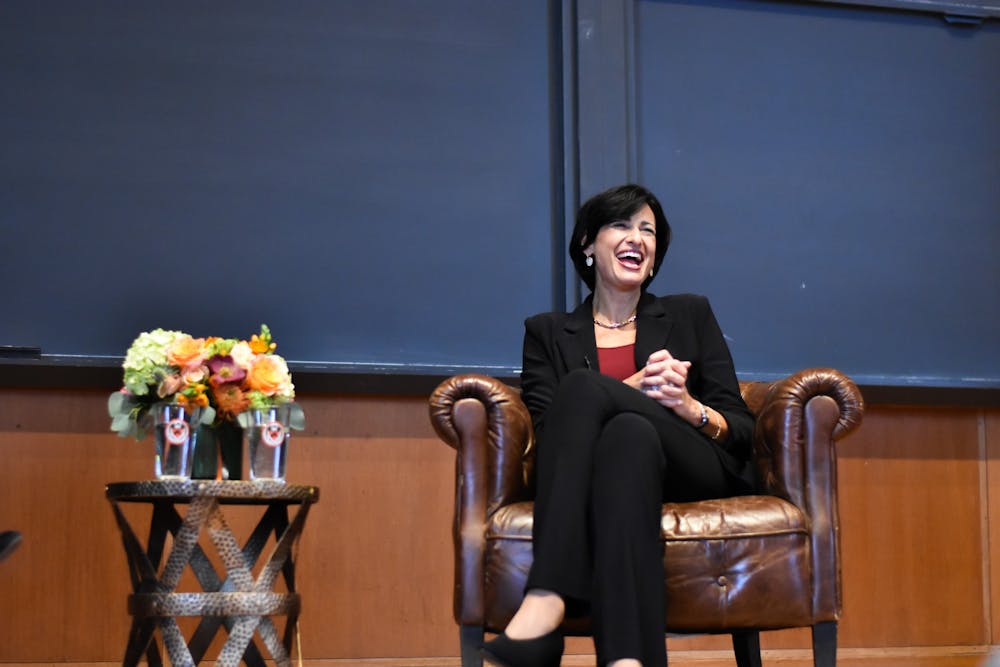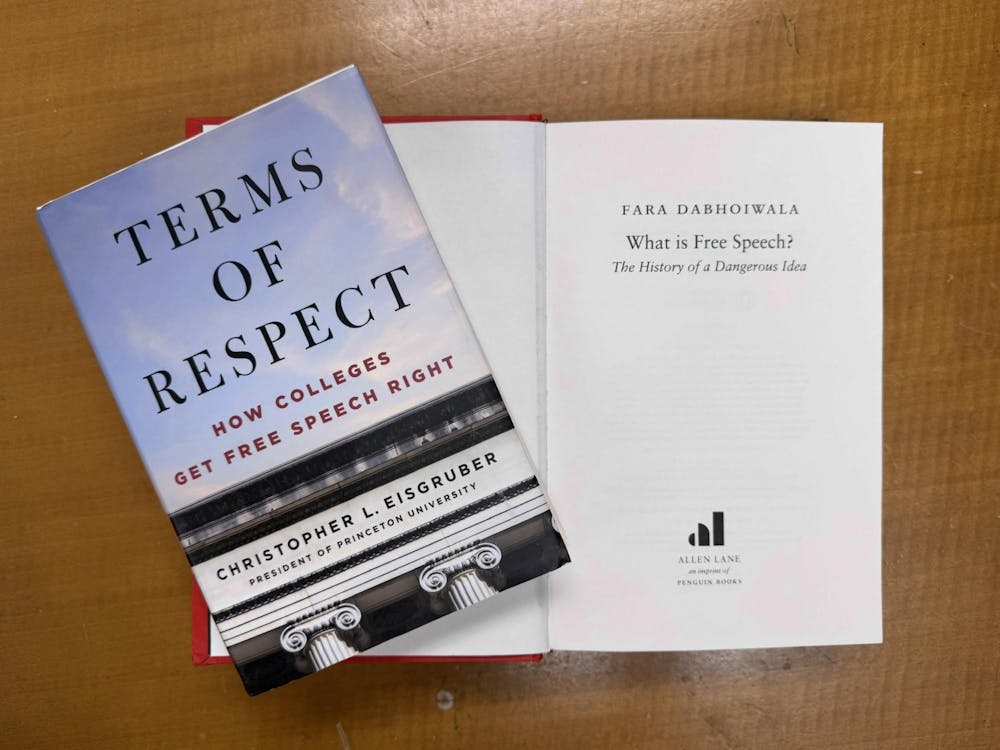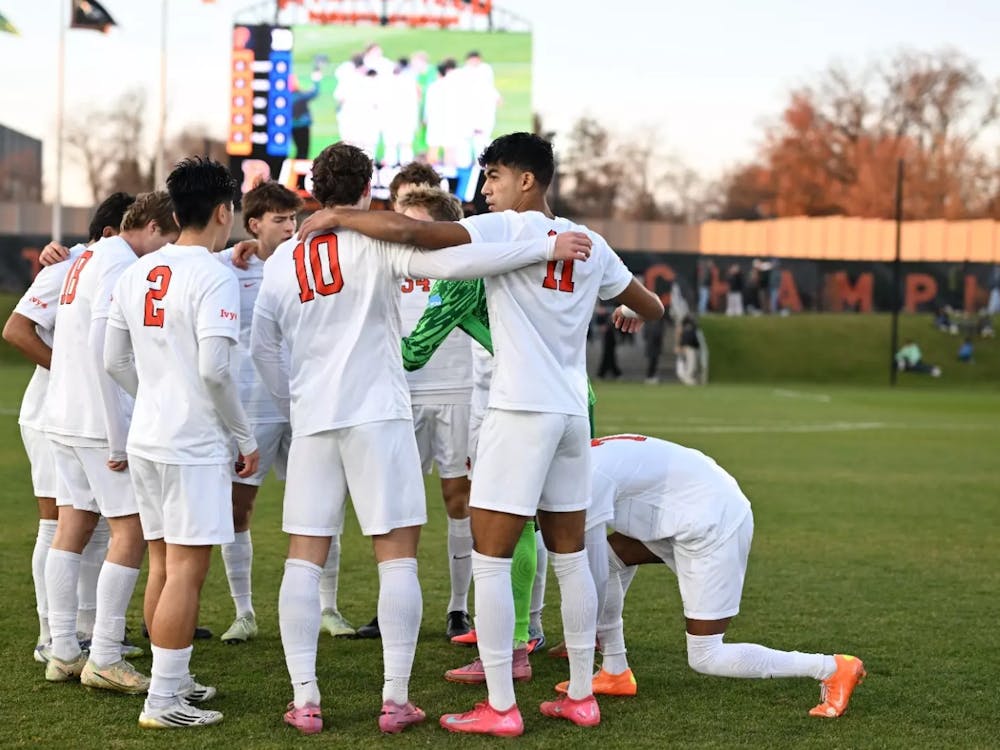Dr. Rochelle Walensky is the Director of the Centers for Disease Control and Prevention (CDC). Before serving as CDC Director, Walensky was a professor at Harvard Medical School and Chief of the Division of Infectious Diseases at Massachusetts General Hospital.
The Daily Princetonian sat down with Dr. Walensky to gain her insights on the future of American public health, the shortcomings of the current system, and what changes might result from the COVID-19 pandemic.
Responses have been edited for clarity and concision.
The Daily Princetonian: The CDC’s recent emphasis on personal responsibility with respect to COVID-19 policy leaves immunocompromised individuals at higher risk. How will the CDC work to re-establish this trust among these vulnerable populations?
Rochelle Walensky: First, let me say how deeply we care about these vulnerable populations. Our COVID-19 community levels that were released on February 25 really focus on medically significant diseases. And part of the reason that we did that is [because] omicron is milder. And we saw three times the number of cases of omicron as we saw hospitalizations than any prior variant. What we also wanted to make sure of is that vulnerable populations were protected. We now have fourth doses [of COVID-19 vaccines] for immunocompromised people. We have a monoclonal antibody to protect immunocompromised people, we have N95 masks and guidance that we have been giving out to immunocompromised people. And we continue to maintain really close connections with those communities to make sure that they are protected, and to work hard to make sure that they’re protected.
DP: What do you consider to be the greatest shortcoming in the American public health system? How, if at all, do you anticipate that the COVID-19 pandemic might change the system?
RW: This pandemic really opened our eyes [to] the true frailty of our public health infrastructure in this country. So in the last 10 years, we’ve had H1N1, we’ve had Zika, we’ve had Ebola, and then we now have COVID-19. And we have lost [in those last 10 years] 60,000 public health jobs. During the first months of this pandemic, we lost an additional 200 just from public health threats to personnel. So we need a really robust public health workforce, [one] that has been under-invested in for decades.
DP: What are other challenges of note?
RW: Data monitor[ing]. The CDC collects reportable disease data for things like syphilis and gonorrhea, measles, and tuberculosis. CDC has never been responsible for collecting data on a disease that’s reported a million cases a day, which is what COVID-19 was. Many of our public health systems were faxing in test results because there were no public health systems to actually collect [this data]. So we need data systems that are interoperable, that can all feed in, that are technologically advanced. CDC does not have the authority to collect this data, we [have to] rely on the voluntary reporting of states. There are states that have wastewater data that don’t report it to us. And then finally, [we need] laboratory infrastructure. And I’m thrilled that the infrastructure that we’re building now will not only allow for genomic sequencing of COVID-19, but [also] of antimicrobial-resistant pathogens. So many of the things that we’ve built are going to be left in place. But we had to build that during this pandemic, and that is not the time to build them.
DP: At the end of the day, each victim of COVID-19 — or any illness — is a person. How do you reconcile the impact of public health with the lack of humanity afforded by the statistics necessary to draw the conclusions required to make effective policy?
RW: This hits close to home because I was at the [hospital] bedside the week before I was at the CDC. So one need not convince me that these are people with families. It is the case that the ticker on the news reports numbers.
We need to make guidance at the CDC that informs public health that by definition does not inform individual health. Our guidance has to be applicable in New York City. It’s got to be applicable in Cherokee Nation. It’s got to be applicable in rural Montana. And it’s got to be applicable in Guam. So that is the responsibility of our guidance, and it’s got to be transparent, scientifically driven, and then yet delivered to jurisdictions and to providers so they can deliver that to individuals who have their own individual risk profiles. But it is completely not lost on me that every single one of those over 950,000 people who are a ticker on a newscast are individuals in this nation.

DP: How do you reconcile the sense that there is a person behind each statistic, when those individual experiences are so vastly different?
RW: So that is the interplay between public health and individual health. At the CDC, we have to provide public health guidance, but we work very closely with many of our partners, whether it’s our state public health officials, our jurisdictional public health officials, [or] our medical societies. We are working with them to try and translate what we are seeing at the public health level as to how they as physicians should be delivering that care. For example, the first guidance for long COVID-19 came from the CDC and we did outreach calls with providers about the implication of these new recommendations for you and how you deliver care. We do all that outreach every day of the week.
DP: What was the CDC’s greatest triumph and most significant pitfall in responding to the COVID-19 pandemic?
RW: The CDC’s responsibility is to protect the health, safety, and security of Americans 24/7 from any threat, domestic or abroad. We’ve been around for 75 years, but we’ve never had to be in a pandemic. I’m not going to call this triumph because I don’t think this pandemic is over. We still have a lot more work to do.
One of the challenges in the moment of this pandemic is that I have said science is going to inform everything that we do; I said that I was going to deliver the science to the American people. What I didn’t say — and probably should have — is that science is gray. And that, while everybody wants the answer to be perfectly black or white, it is not. Certainly, it is not as science is emerging about a new variant or about a new vaccine, or about how long vaccines work. And when that science is gray, that means that you’re going to have different scientific opinions. And that’s okay. But the responsibility of the CDC is to provide guidance, in the moment of a pandemic, and sometimes the science is imperfect to inform the decisions that you have to make.
DP: If you could turn back time, what might you change about the CDC response to COVID-19?
RW: I would hope that our next response to a pandemic will be built upon a public health infrastructure that is more robust. So many people have said [that] we’re building the plane while we’re flying it through this pandemic. That’s been true in healthcare. That’s been true as we’ve been providing guidance. That’s not okay. We can’t have a public health infrastructure where that is the case, we need to readily be able to see the data, we need to readily be able to have public health on the ground. And that’s the work that we’re doing now. So that if we’re ever in this situation, again, we have that robust lab, infrastructure, and data.
The other thing I will say is, as an infectious disease physician, we have always known that equity has been a real challenge in medicine. That has been laid bare during this pandemic: there has not been enough focus throughout recent medical history on making sure there’s equitable access to care, equitable access to resources to improve public health, [and] social determinants of health have not gotten enough attention or investment. And so I do hope that this moment will allow us to make those investments because I don’t think anybody’s safe until we’re all safe.
DP: So how might the CDC go about bringing those inequities to light such that they don’t fade out? How are those issues going to stay relevant?
RW: We have huge efforts ongoing. First of all, the CDC has always had big investments in health equity. That has been something that the CDC has been doing. We are doubling down on that right now. About 10 weeks after I came into the position in early April 2021, I declared racism a serious public health threat. And 200 departments of public health throughout the country followed suit. So we now have many departments [of] public health around the country working towards ensuring that race is not a serious component that leads to decreases in health [outcomes]. I no longer wanted to sort of talk about the differences in race leading to poorer health outcomes — I wanted to do something about it. I wanted to understand what the interventions needed are to be in order to improve upon it. I challenge all of my divisions and centers to come up with interventions to improve and to understand those things.
DP: Is there anything else you’d like to add?
RW: Get boosted. In order for us to maintain the surveillance, the testing, the studies, the vaccines, the boosters, therapeutics, for anything that may come ahead, we need more resources. We have done quite a good job [of] getting equitable access to primary series vaccinations around this country. We are working on equity and getting people boosted. Right now, we have delivered about 97 million boosts to the 215 million people who’ve been vaccinated and we need to get more people boosted. We know that with omicron, you’re about 50 percent protected from being in the hospital if you’ve gotten your primary series and about 90 percent if you’re boosted. So get boosted.
Anika Buch is an Associate News Editor at the ‘Prince’ who typically covers STEM communities and research on campus. She can be reached at ambuch@princeton.edu.








